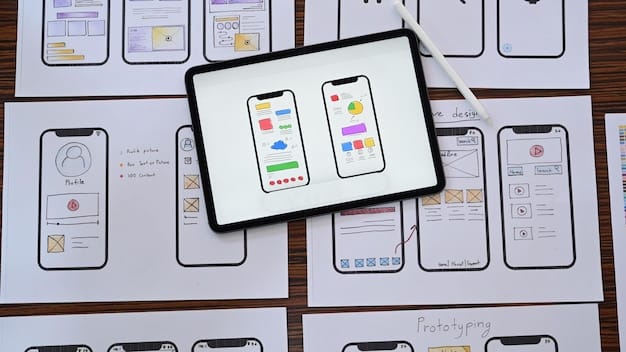Boost Efficiency: Integrate Calendar & Task Management Apps

Boost efficiency by integrating your calendar application with a task management tool to streamline your workflow, automate scheduling, and improve overall productivity by 20%.
Are you looking to optimize your daily workflow? Integrating your existing calendar app with a task management tool can significantly boost efficiency, potentially increasing your productivity by up to 20%. Let’s explore how to make this powerful combination work for you.
Why Integrate Your Calendar and Task Management Tool?
Integrating your calendar and task management tool might seem like a small change, but the benefits are substantial. It’s about creating a unified system that helps you manage your time and tasks more effectively. By connecting these two essential tools, you can avoid common productivity pitfalls such as missed deadlines, double bookings, and scattered focus.
Think of it as creating a central hub for all your work-related activities. No more switching between apps, forgetting important meetings, or losing track of tasks. Here’s how integration can transform your workflow.
Reduced Context Switching
Constantly switching between different apps can be a major drain on your productivity. Each switch requires mental effort to reorient yourself, leading to wasted time and decreased focus. An integrated system minimizes this need, keeping everything you need in one place.
Improved Time Management
When your calendar and tasks are synced, it’s easier to allocate time for specific tasks. You can see exactly when you have availability and schedule tasks accordingly, ensuring that you’re making the most of your time. This leads to better planning and execution of your daily activities.

Here are some ways that it would help:
- Eliminate the need to manually transfer tasks to your calendar.
- Visualize your workload and upcoming deadlines in a timeline view.
- Reduce the risk of overbooking or scheduling conflicts.
Integrating your calendar and task management tool is more than just a convenience; it’s a strategic move to optimize your workflow and boost your overall productivity.
Step-by-Step Guide to Integrating Your Apps
Integrating your calendar app with a task management tool doesn’t have to be a daunting task. Many popular apps offer straightforward integration options. Here’s a step-by-step guide to help you through the process.
Even if you’re not particularly tech-savvy, these steps will help you combine the power of your calendar and task manager.
Check for Native Integrations
Many popular calendar and task management apps, such as Google Calendar and Todoist, or Microsoft Outlook and Microsoft To Do, offer native integrations. This means the apps are specifically designed to work together seamlessly. Check the settings or help documentation of both apps to see if native integration is an option.
Use Third-Party Integration Tools
If your apps don’t have native integrations, you can use third-party integration tools like Zapier or IFTTT (If This Then That). These platforms act as a bridge between different apps, allowing you to create automated workflows. For example, you can set up a Zap to automatically create a task in your task management tool whenever a new event is added to your calendar.
- Sign up for an account on Zapier or IFTTT.
- Connect your calendar app and task management tool to the platform.
- Create Zaps (Zapier) or Applets (IFTTT) to automate tasks between the two apps.
These tools are extremely useful for people who use apps that aren’t natively built to function together.
Choosing the Right Task Management Tool
Selecting the right task management tool is crucial for a successful integration with your calendar app. The ideal tool should not only integrate seamlessly but also align with your workflow and personal preferences. Let’s explore some key factors to consider when choosing a task management tool.
There a lot of options out there, but not every task management tool will work for you. By considering integration, usability, and features, you can find a great match for your workflow.
Integration Capabilities
First and foremost, ensure that the task management tool integrates well with your existing calendar app. Check for native integrations or compatibility with third-party integration platforms like Zapier or IFTTT. A seamless integration will save you time and effort in the long run.
Ease of Use
The best task management tool is one you’ll actually use. Look for an app with a user-friendly interface, intuitive navigation, and customizable settings. A complex or clunky interface can hinder your productivity rather than enhance it. Many apps offer free trials or demos, so take advantage of these to test out different tools.

Here are some extra helpful features to look for:
- Task prioritization: The ability to prioritize tasks based on urgency and importance.
- Collaboration features: Tools for sharing tasks and collaborating with team members.
- Mobile accessibility: A mobile app that allows you to manage tasks on the go.
Choose a tool that feels like an extension of your workflow, not an obstacle.
Leveraging Automation to Streamline Your Workflow
Automation is the secret ingredient that takes your calendar and task management integration from good to great. By automating repetitive tasks, you can free up valuable time and mental energy to focus on more important activities. Let’s explore how you can leverage automation to streamline your workflow.
Automate your life! This leads to greater productivity, less stress, and a more focused mindset.
Automated Task Creation
One of the most effective ways to use automation is to automatically create tasks based on calendar events. For example, if you have a meeting scheduled in your calendar, you can set up an automation to create a task in your task management tool to prepare for the meeting.
Due Date Synchronization
Keep your tasks and calendar in sync by automatically updating due dates. If you reschedule an event in your calendar, the corresponding task in your task management tool should automatically update to reflect the new deadline. This ensures that you’re always working with the most up-to-date information.
Here are even more ways to automate:
- Creating recurring tasks based on recurring calendar events.
- Setting up reminders for upcoming tasks and events.
- Automatically assigning tasks to team members based on their availability in the calendar.
The more you automate, the more efficient your workflow becomes.
Measuring the Impact: Tracking Your Productivity Gains
Integrating your calendar app with a task management tool is a strategic move to enhance productivity. But how do you know if it’s actually working? Measuring the impact of this integration is essential to understanding its value and identifying areas for further improvement. There are several key metrics you can track to gauge your productivity gains.
It’s important to monitor your progress in the weeks and months after integrating your calendar and task management tools. This will let you measure just how much more productive you’ve become, which is a great boost to motivation.
Time Savings
One of the most direct ways to measure the impact of integration is by tracking the amount of time you save each day. Use a time-tracking app or simply keep a log of your activities to see how much time you spend on tasks before and after the integration.
Task Completion Rate
Monitor the number of tasks you complete each day or week. A higher task completion rate is a clear indicator that you’re becoming more efficient. Use the reporting features of your task management tool to track your progress over time.
- Keep a log of your activities before and after the integration.
- Compare your task completion rates over a period of several weeks or months.
- Look for trends and patterns in the data.
Data-driven insights will help you fine-tune your workflow and maximize your productivity gains.
Troubleshooting Common Integration Issues
While integrating your calendar app with a task management tool can significantly boost your productivity, it’s not always a smooth process. You might encounter some common issues along the way. Here’s a guide to troubleshooting these problems and getting your integration back on track.
Sometimes things don’t go as planned. By understanding what the most common issues are, you can solve the problem and get back to optimizing your workflow.
Synchronization Problems
One of the most common issues is when tasks and events fail to synchronize properly between your calendar and task management tool. Here are some steps you can take to resolve this:
- Check your internet connection to ensure that both apps are able to connect to the internet.
- Make sure that the integration is properly configured in both apps.
- Clear the cache and data of both apps to remove any corrupted data.
Compatibility Issues
Sometimes, certain features may not work as expected due to compatibility issues between your apps. This is especially common when using third-party integration tools.
There are some ways to try and resolve compatibility issues:
- Update both apps to the latest versions to ensure that you have the latest features and bug fixes.
- Explore alternative integration methods, such as using a different third-party tool or native integrations.
Solving these things will help you get the most out of your productivity tools.
| Key Point | Brief Description |
|---|---|
| ✅ Reduce Context Switching | Minimize time wasted switching between apps, improving focus. |
| 🗓️ Improve Time Management | Allocate time for tasks effectively with synced calendars and tasks. |
| ⚙️ Leverage Automation | Automate repetitive tasks to free up time and mental energy. |
| 📈 Track Productivity Gains | Measure time savings and task completion rates to assess integration impact. |
Frequently Asked Questions
▼
Integrating your calendar with a task management tool reduces context switching, improves time management, and helps you allocate time for tasks effectively, boosting productivity.
▼
Look for tools that offer native integrations or compatibility with third-party integration platforms, have a user-friendly interface, and align with your workflow and preferences.
▼
You can automate task creation based on calendar events, synchronize due dates, and set up reminders for upcoming tasks, streamlining your workflow significantly.
▼
Track time savings, task completion rates, and identify areas for improvement to gauge your productivity gains and understand the integration’s value.
▼
Common issues include synchronization and compatibility problems. Ensure a stable internet connection, check integration settings, and update apps to the latest versions.
Conclusion
Integrating your calendar app with a task management tool is a powerful way to enhance your productivity and streamline your workflow. By reducing context switching, improving time management, and leveraging automation, you can boost efficiency and achieve your goals more effectively. Take the steps outlined in this guide, and see how much you can achieve.





